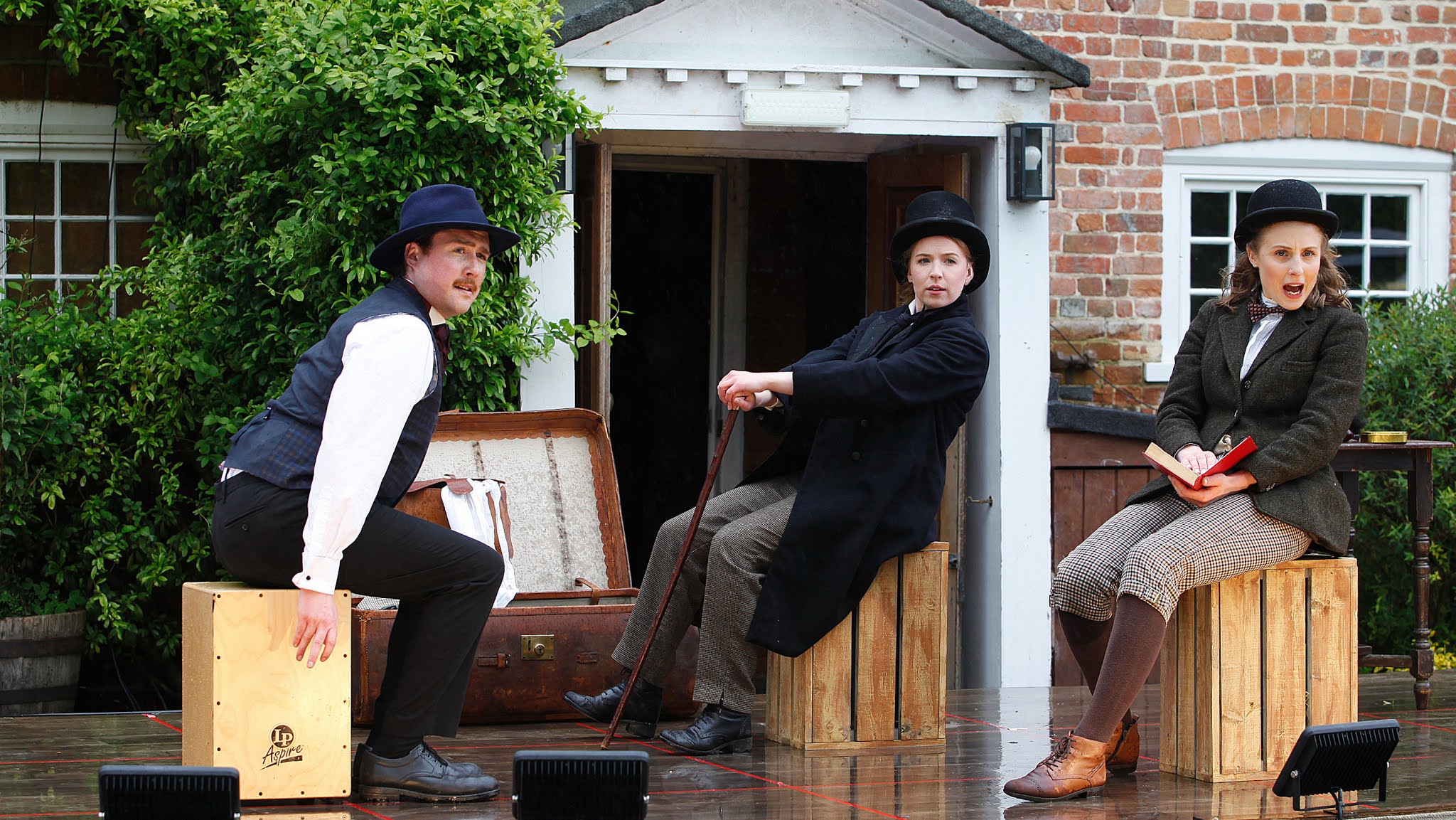When we first saw this show in the August 2020 sunshine it was our first live show after the first lockdown and its celebration of that fact with plenty of jokes about social distancing, face coverings and anti-bac sprays was the secret weapon in an energetic and lively production. It had the feel of an improvised melodramatic pantomime that might have been part of the Edinburgh Fringe Festival. Its quick revival as the opening show in the 2021 summer season is a bold move but the feel was very different on a cold damp May evening with only half the audience tables filled. As live Theatre emerges from the third lockdown, nine months after its first outing the Covid jokes feel less fresh, and the spontaneity feels more laboured.
Abigail Pickard Price's adaptation of the Arthur Conan Doyle story of The Hound of the Baskervilles uses the original novel as a launchpad for a riotous three-handed dash around the Dorset, sorry Devon, moors in search of the Hound which as one character says would have Conan Doyle spinning in his grave. Pickard Price, as an associate director of the Watermill, has directed several shows over the years at the venue and is used to working within the limits of the small venue but on this occasion, she has worked with no set, props from stock, and apparently only four days of rehearsal. This version is staged on the front lawn and the Watermill itself provides an attractive backdrop to the production.



